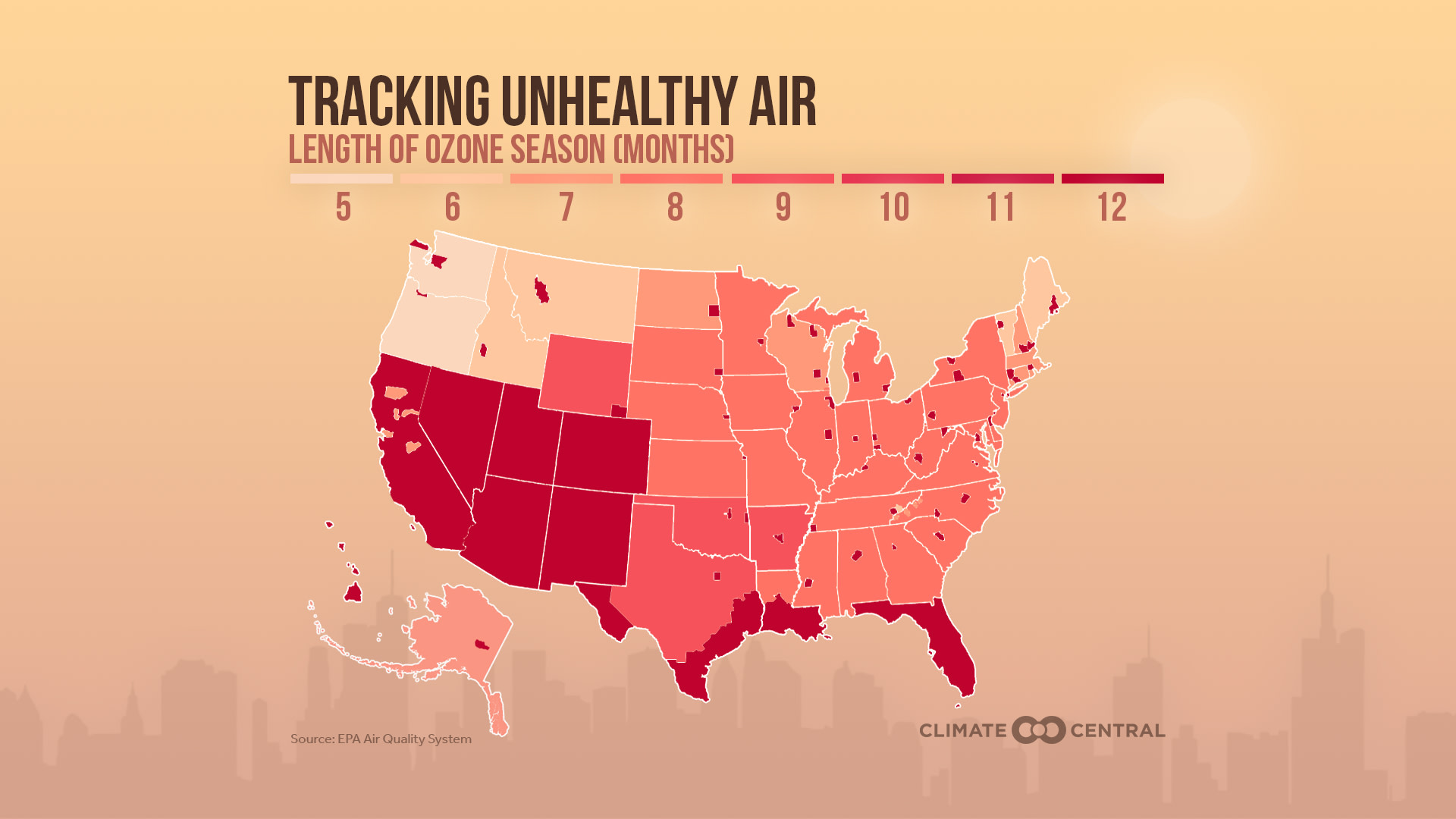Last week, we showed that hot summer temperatures are linked to air stagnation—which is increasing in most of the country. Stagnation traps harmful air pollutants like PM2.5 and ground-level ozone. This week, our new report takes a deeper look at ground-level ozone, the pollutant that exceeds national standards in counties that house 124 million Americans.
Unlike natural stratospheric ozone, which protects us from the sun’s ultraviolet radiation, ground-level ozone is a pollutant. It forms when heat and sunlight allow the reaction of two other pollutants: nitrogen oxides and volatile organic compounds. These chemicals come from industrial plants, electric utilities, vehicle exhaust, wildfire smoke, and oil and gas extraction. High heat can accelerate this process. The resulting ground-level ozone can build up to unhealthy levels—especially without wind or rain to mix up the air.
Using EPA data, Climate Central analyzed days when ozone levels reached unhealthy levels (details in methodology) in 244 U.S. cities and highlighted 54 cities where ozone is a recurring issue. In the past four years, 40 cities have had at least 20 unhealthy ozone days. Palm Springs, California led the list with 450 unhealthy days during that period, followed by nearby Los Angeles (394) and Bakersfield (372). In addition, 14 cities have observed an uptick within the last four years.
Though ozone pollution has declined since the Clean Air Act of 1970, several states have year-round “ozone seasons,” when levels must be closely monitored. These states include Florida, Nevada, Hawaii, Arizona, New Mexico, Utah, Colorado, and most of California, as well as southern Texas and Louisiana. Urban areas also experience more ozone, due to more pollution and amplified heat from the urban heat island effect. Future air quality progress could be threatened by the warming climate, which is projected to increase ozone formation if all else stays constant.
Ozone is a serious health problem. Risks include asthma attacks, pneumonia, coughing and shortness of breath, cardiovascular damage, increased susceptibility to infections, and decreased lung functions. Children and other vulnerable populations face higher risks. Here are ways to limit those risks:
Check your area’s ozone conditions by typing in your zip code to theEPA Air Quality Index.
Avoid working outside on high ozone days—and limit pollution from gas-powered vehicles and mowers if possible.
METHODOLOGY: Climate Central analyzed daily ground-level ozone data for the counties of 244 cities from 2000-2018, as obtained from the EPA Air Quality System. Annual unhealthy ozone days were calculated for each county as well as a 2000-2014 annual average. An “unhealthy” ozone day is defined as one where the 8-hour max exceeds the most current NAAQS standard of 0.070 ppm (equivalent to an AQI value greater than 100). To highlight areas with an ozone problem, locations were identified that had either:
a large number of ozone days over the past four years in terms of pure count (greater than 20 days over the past four years),
an increase in recent years (a continuous increase in days over at least 3 of the past 4 years), or
more ozone days in a single recent year (2015-2018) than their 2000-2014 average.
